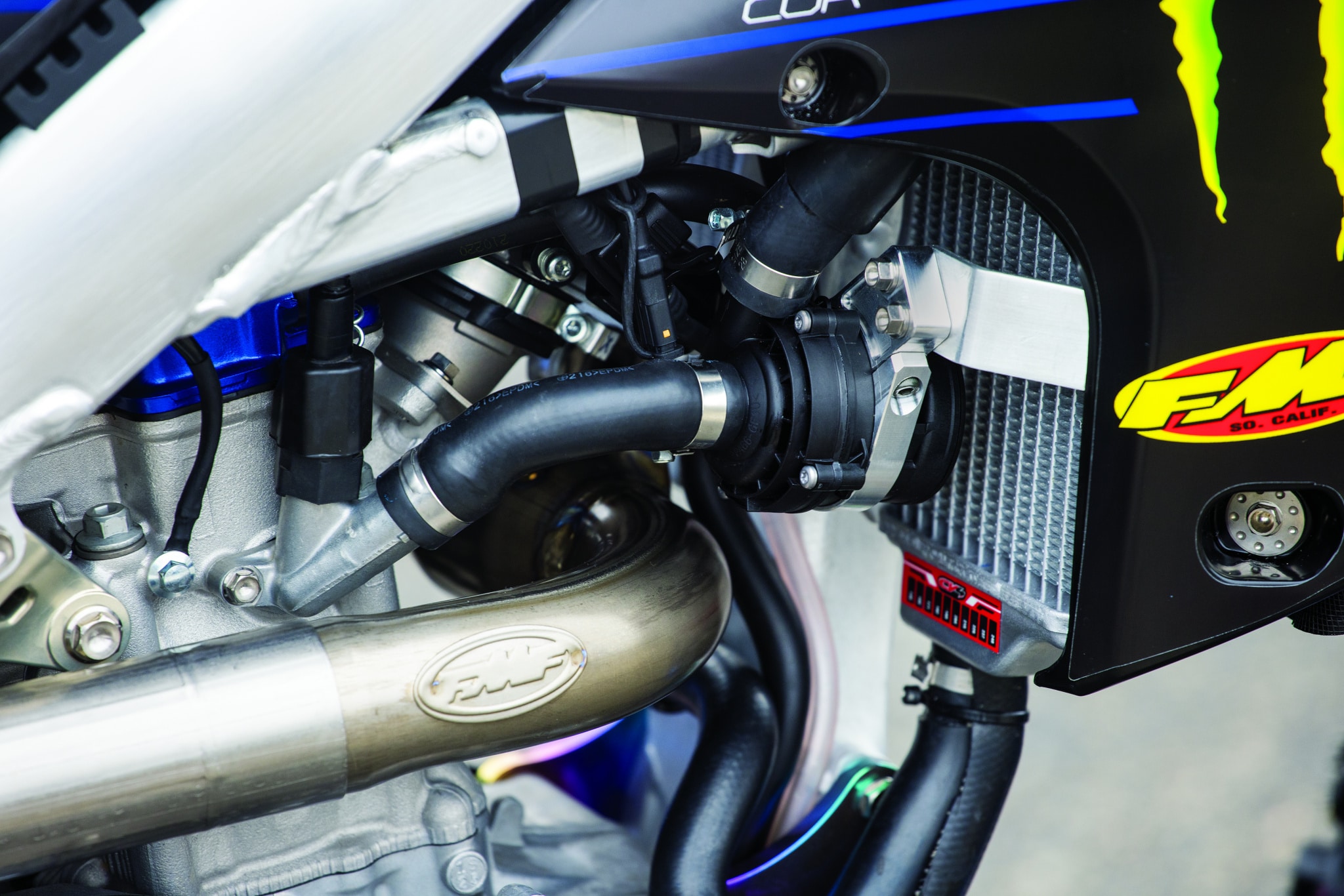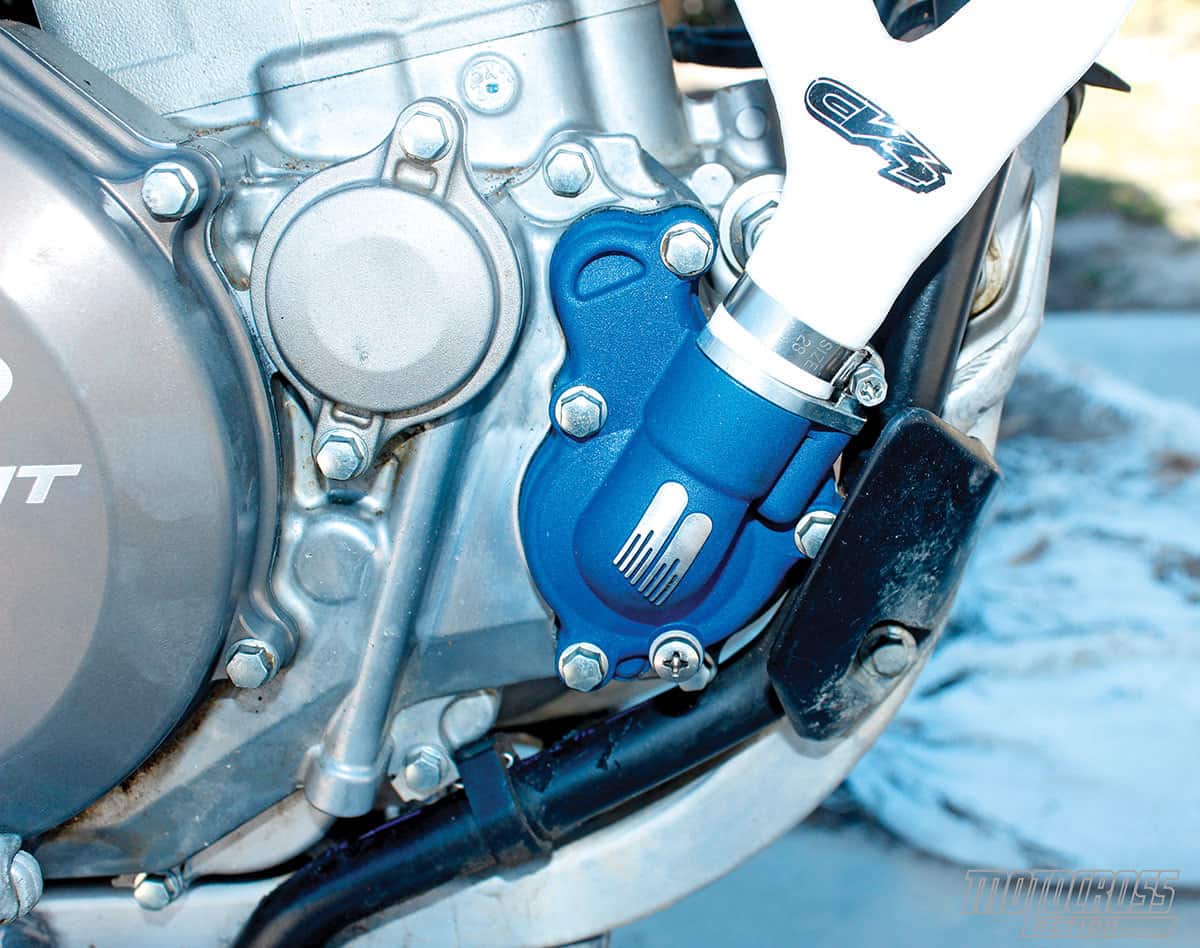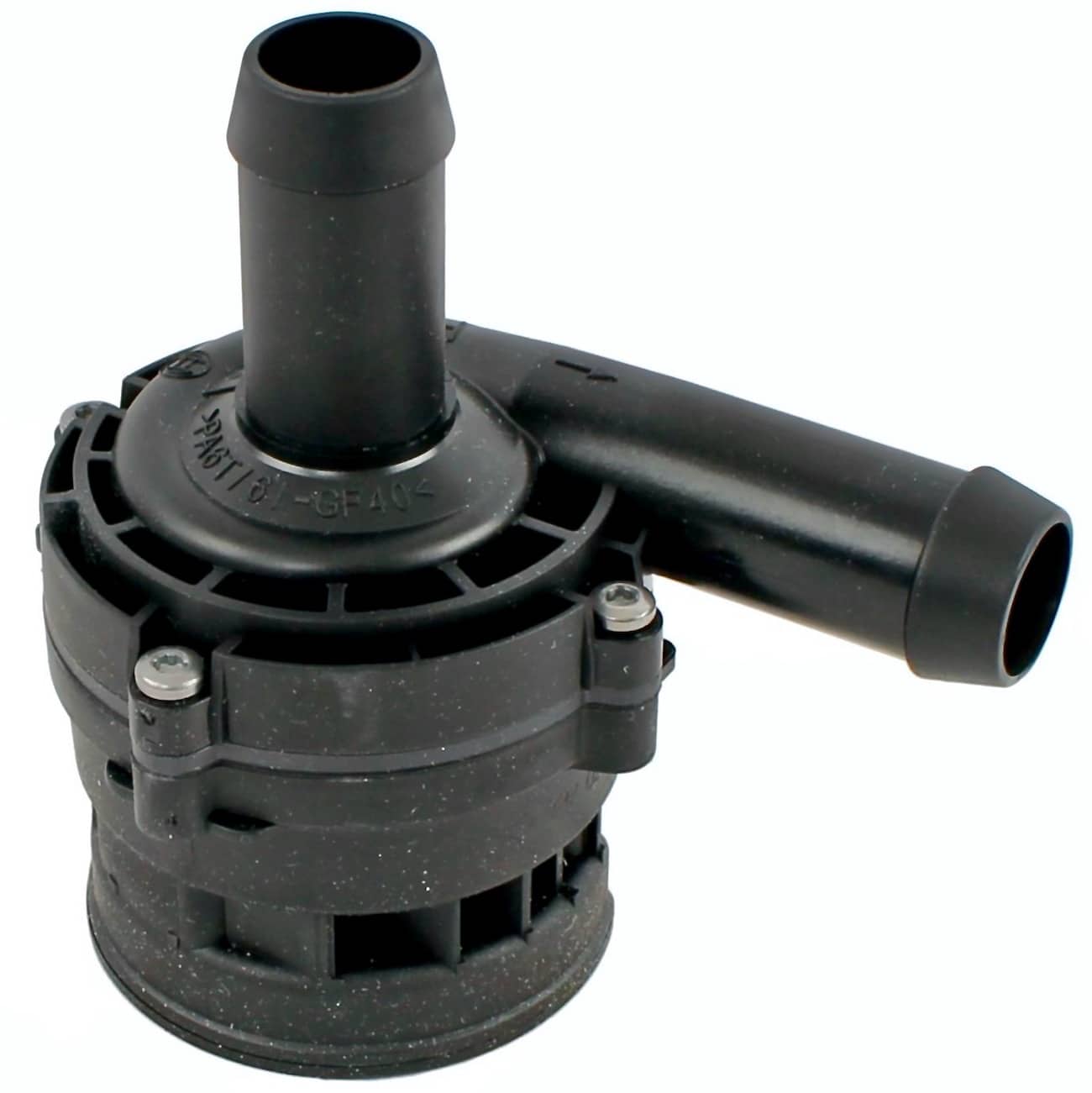TEN THINGS ABOUT ELECTRIC WATER PUMPS

(1) HRC Honda. The factory HRC Honda team was the first to implement an electric water pump on its bikes. Jett and Hunter Lawrence’s CRF250s ran an E-pump from midway through the 2021 Nationals, and it was on the bike when Jett Lawrence won his first AMA 250 National Championship. Now, the electric water pump can be seen on the Star Racing Yamaha 250s, BarX Suzuki 250s and MotoConcepts Honda 250s.
(2) Standard pumps. The stock water pump on a dirt bike uses centrifugal force to circulate water. Depending on the model, the water-pump drive gear is rotated by either the crank or counterbalancer. The water-pump drive gear turns an impeller shaft that extends through the oil and coolant seals. On the other side of the seals, the impeller pumps coolant through the radiators and back into the engine to keep it from overheating.
(3) RPM. Higher rpm (revolutions per minute) increases heat inside an engine. To keep things working correctly, a standard water pump ramps up its speed with the rpm of the engine. A higher rpm equates to a faster-moving impeller to manage the increased heat.
(4) Management. With an electric water pump, the coolant’s flow is not based on the centrifugal force of the engine—an electric water pump is wide open full-time. The simplest way to manage the pump is to leave it on full speed consistently when the bike is running. You could also manage the parameters of when the pump is on manually through a thermostat or digitally through the ECU. In the early stages of electric water pumps, the teams ran the pumps wide open all the time, but they are quickly advancing to being controlled digitally.

Production water pumps spin an impeller at whatever rpm the engine runs at, which means the amount of water, and thus cooling, is reduced at low speed.
(5) Radiator fans. As seen at the Nationals, radiator fans also help reduce engine heat. The technology for the thermo-switch and digitally controlled ECU settings that are being used to turn the E-pump on/off originally came from radiator fans.
(6) Temperature. Star Racing Yamaha claims that its electric water pump decreases the engine’s coolant temperature by 20 degrees. It is 20 degrees cooler before a moto, during a moto and after a moto. Because the e-pump doesn’t work off engine rpm, it is able to flow water through the system even at very low rpm. With a standard pump, when the rider lets off the throttle, the water pump slows down. In contrast, an e-pump flows the same amount of water, even on the tightest sections of the track when the rider isn’t running the engine high in its rpm range.
(7) Parasitic drag. Reducing heat can increase horsepower and durability; however, the main aspect that is boosting horsepower is that there is now less drag on the engine with an electric water pump, especially in the 250 class where any drag on the engine is noticeable. With an externally fixed electric motor being used to pump water through the engine, the water-pump drive gear, drive shaft, seals, and impeller can be removed and plugged. In standard form, the drive gear and impeller experience parasitic drag while churning through engine oil and coolant, and this puts an extra load on the engine. With an electric motor pumping the coolant instead, the engine is freed from this responsibility, allowing it to rev up quicker and make more power.

The Bosch electric water pump is inexpensive and readily aviale at auto parts store—but you’ll need to make a bracket do the wiring yourself.
(8) Bosch pump. The electric water pump that is seen most commonly behind the right-side radiator on most 250 four-strokes in the pits is the same Bosch water pump that is used on select Mercedes-Benz vehicles for the auxiliary heater inside the cabin. It can be bought online for under $65. Twisted Development (BarX engine builder) and XPR Motorsports (MotoConcepts engine builder) are working on kits to sell to the public.
(9) Water-pump seal. The biggest liability on the standard-issue water pump is the mechanical seal used to contain the coolant. The mechanical seal is spring-loaded and is extra hard to turn, increasing drag on the engine; however, different manufacturers use different sealing systems. For example, Honda’s water-pump seal has a lot of drag, but KTM’s water-pump and drive-gear seals are more efficient from the get-go. So, there is more to gain from an electric water pump on a Honda and less on a KTM.
(10) Oil cooler. Used primarily on factory bikes at the AMA Nationals, oil coolers are external catch tanks for engine oil that use airflow to lower oil temperatures. Oil coolers increase power and durability; however, if you had to choose one option, Twisted Development recommends going with an electric water pump. Oil coolers increase oil pressure (as the oil has to be pumped into the catch can) and therefore slightly increase drag on the engine. The electric water pump decreases the temperature and drag on the engine. We have seen see lots of external e-water pumps and oil coolers at the 2022 AMA 250/450 Nationals.





Comments are closed.